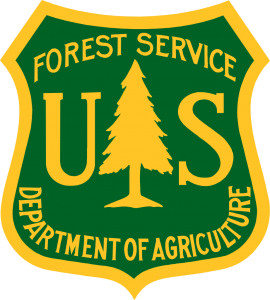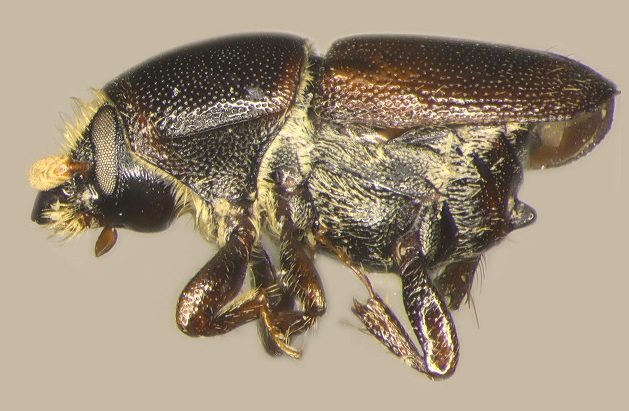October 3, 2017

The USDA Forest Service, Forest Health Protection in coordination with the Santa Fe Botanical Garden are monitoring for exotic, invasive insects that may pose a risk to the health of our urban and native forests.
Three sets of 4-cup Lindgren funnel traps baited either with alpha-pinene, high-release ethanol, or querciverol were established at the Santa Fe Botanical Garden in June 2017. The traps were sampled approximately every three weeks until September 2017.
The querciverol trap caught no significant bark or ambrosia beetles. This bait is fairly specific for ambrosia beetles in the genus Euwallacea spp., which commonly attack various hardwood species. Two Euwallacea species are currently injuring and killing trees in Southern California. The trap baited with alpha-pinene, a commonly volatile component in pine resin, caught no exotic bark or ambrosia beetles.
The ethanol trap caught the exotic bark beetle, the banded elm bark beetle, Scolytus shevyrewi. The beetle was collected in two different sampling periods during the summer. This species has previously been collected in New Mexico in Clovis, Santa Fe, Abiquiu, and Los Alamos according to previous collection records. The banded elm bark beetle has been collected numerous times throughout the U.S. and previous trapping efforts have also collected this beetle in traps baited with ethanol only. The beetle prefers to attack and kill stressed or weakened Siberian elm, but this beetle will also attack American elm. The native distribution of the beetle spans Northern China, Mongolia, Korea, Russia, Kazakhstan, Uzbekistan, Kyrgyzstan, Turkmenistan, and Tajikistan.

Banded elm bark beetle adult: Adults commonly have a stripe coloration, “band,” across the forewings and the ventral spine (arrow) is more posterior and more broadly conical than the European elm bark beetle, which is the primary vector of Dutch elm disease.
For more information, contact Tom W. Coleman, twcoleman@fs.fed.us


